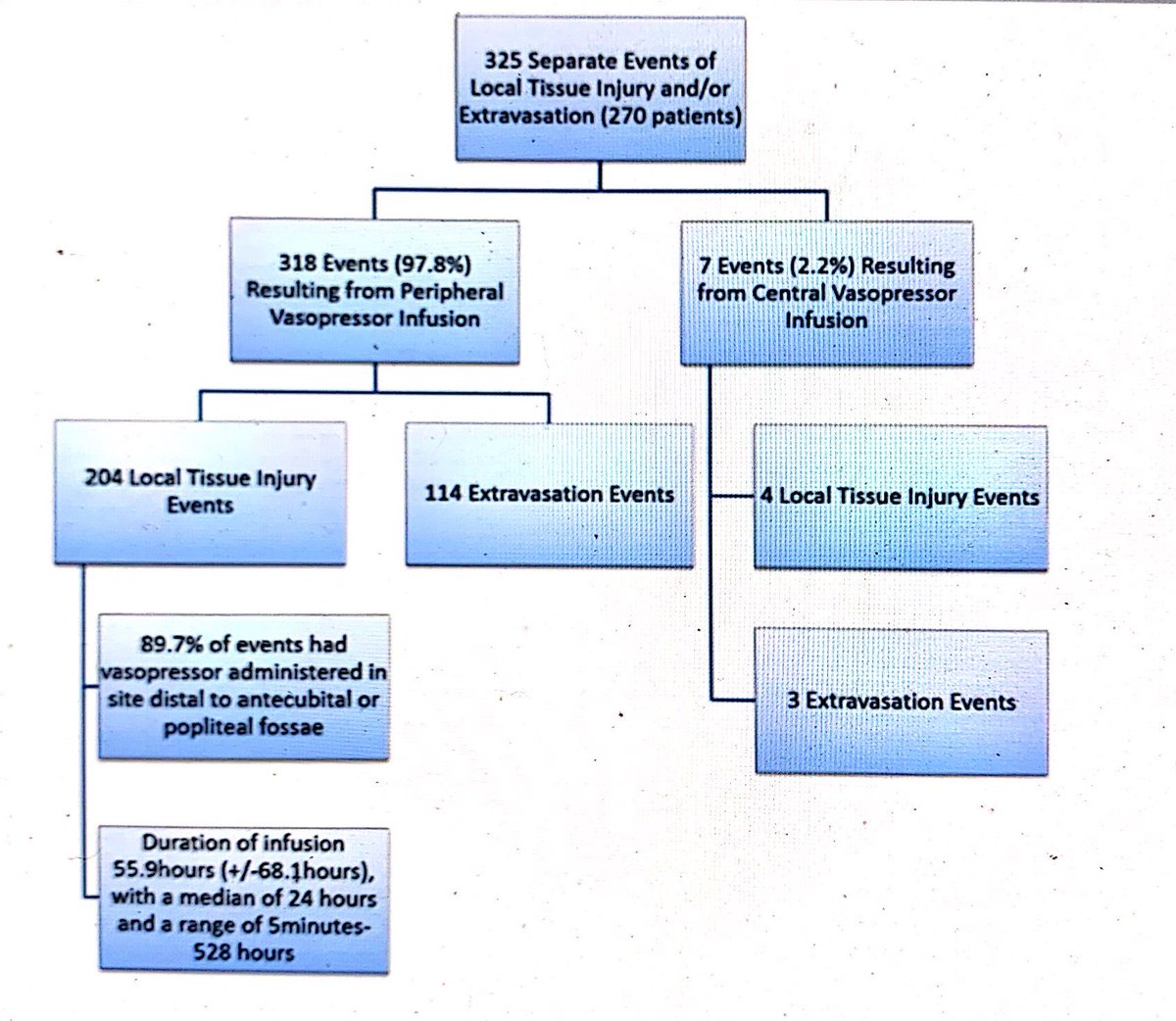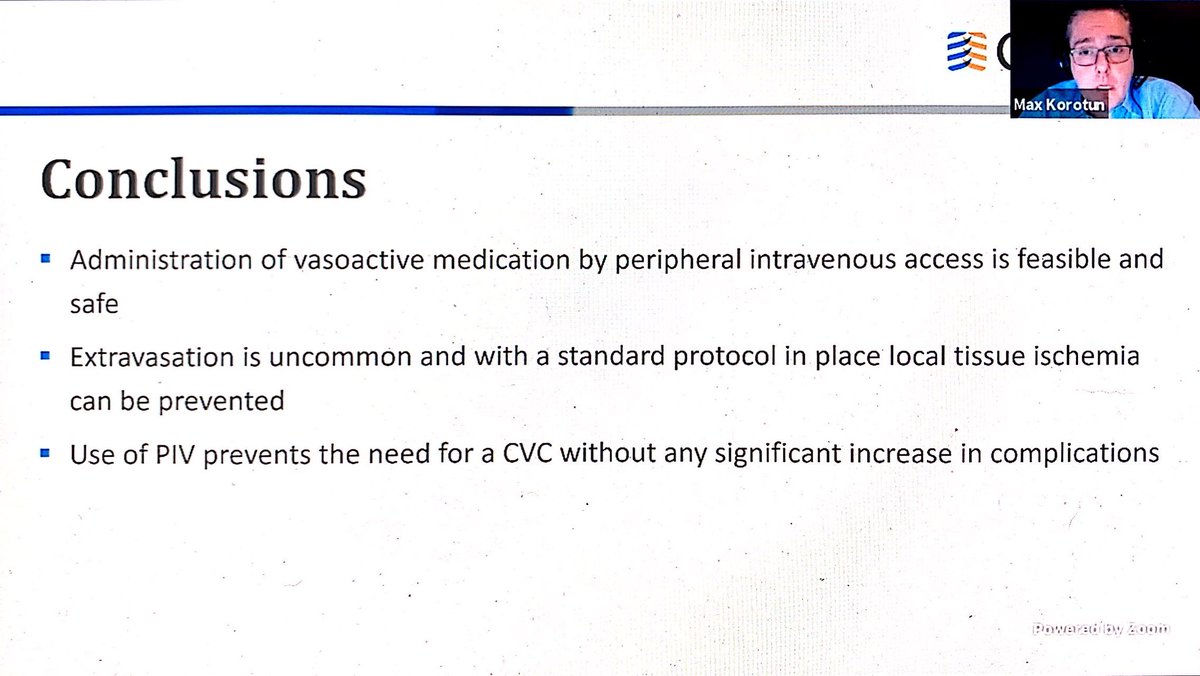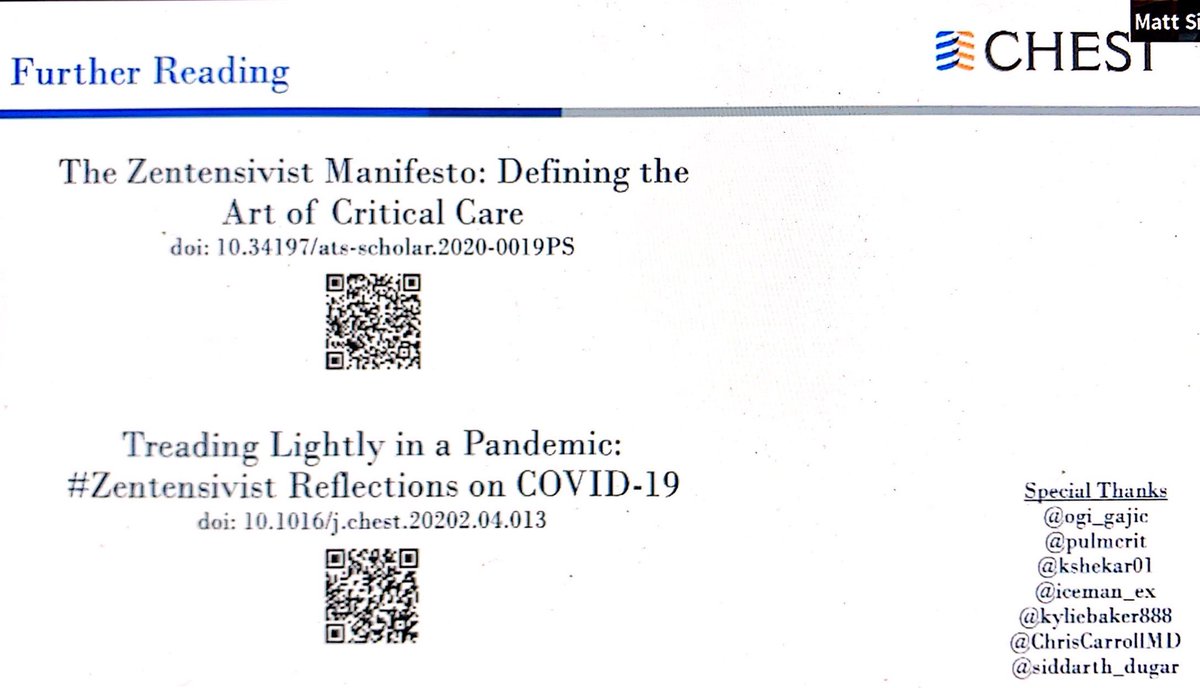
Next item for Tweet-ucation is "Masterly Inactivity: The Art and Science of Reducing Unnecessary Interventions in the ICU"
#CHEST2020
#CHEST2020
First up we have @karanskahlon talking on: "ABG and Arterial Lines for All: A Flawed Paradigm?" #CHEST2020
Do we really need ABGs? Why do we get them? #CHEST2020 

Would a VBG work? It is good for pH and pCO2 as long as there's not hypercapnia. But do you care about compensated hypercapnea? And if it's not compensated you can tell by your pH! #CHEST2020 



What about oxygenation? You can assess that with your SpO2! #CHEST2020 

So what does an ABG have that a VBG does not? #CHEST2020 

To summarize, ABGs are overused and clinical intuition is key! #CHEST2020 

Advantages and disadvantages of arterial lines. #CHEST2020 



Always ask the question, does this person still need an arterial line? #CHEST2020
Next up, Dr. Mangala Narasimhan (@mnarasimhan) will talk on: "Daily Labs and Routine Chest Radiographs - Best Forgotten?" #CHEST2020
A huge amount of money is spent in the US on unnecessary things that do not add value to care! #CHEST2020 

There is a disconnect between the intention and the actual use of the labs we draw. #CHEST2020 

Make sure you consider how to reduce daily unnecessary labs which can actually cause harm. #CHEST2020 

Interventions to reduce labs #CHEST2020 

There is huge variability in the practice of monitoring CXRs in the ICU. #CHEST2020 

Possible advantages of daily CXRs #CHEST2020 

This meta-analysis suggested abandoning routine CXRs. #CHEST2020 

The RARE study showed that daily CXRs did not improve outcomes. #CHEST 2020 



You can use ultrasound as an alternative for looking for feeding tube placement, effusions, consolidations, and pneumothoraces! #CHEST2020
Conclusions! #CHEST2020 

Next up, Dr. Maksim Korotun (@MaksimKorotun) will talk on: "Peripheral Vasopressors: A New Paradigm?" #CHEST2020
A brief history of central venous catheters #CHEST2020 

What is the role of peripheral IVs for vasoactive medication administration? #CHEST2020 

This systematic review showed that most extravasation events occurred with distal location of PIVs. The number of events increased with duration of the infusion. #CHEST2020 





Multiple studies show low extravasation rates. #CHEST2020 

This study had an extravasation rate of only 2% and no long-term complications. #CHEST2020 



These are requirements for a good strategy for safe PIV use for vasoactive medications. #CHEST2020 

Conclusions! #CHEST2020 

Finally we have Dr. Matt Suiba (@msiuba) with "Zen and the Art of the Intensivist"! #CHEST2020
What is a #zentinsivist? It is a "holistic approach to the art of caring for the critically ill." #CHEST2020
In that initial golden hour zentinsive care and usual care look very similar. #CHEST2020 

As we get further into the hospitalization we start actively removing interventions. #CHEST2020 

The gap between these two lines is called the intervention gap. #CHEST2020 

Focus on what is essential. What interventions improve humanity? How do we maximize dignity and consciousness? #CHEST 2020
So how do you start practicing #Zentinsivism? Clinical mastery is absolutely a prerequisite! Deliberate clinical experience is important. #CHEST2020
How do you develop risk tolerance? Push the boundaries of what you consider normal vs abnormality. Sometimes it's better to discount mild abnormalities than to try to correct them. #CHEST2020
We should have therapeutic humility. We need to realize that many of our interventions don't help as much as we want them to and may have more harm than we think about. #CHEST2020
Cautious sensible medicine is really the way forward. #CHEST2020 

But when it comes down to it, it's really all about the patient. How can we maximize humanism and minimize depersonalization?
Remember that doing less actually takes more effort. #CHEST2020
The goal is to balance the art and science of medicine with the patient always in mind. #CHEST2020 

Here are a couple of publications if you are interested in reading more! #CHEST2020 

Thanks to all of our fantastic speakers: @msiuba, @karanskahlon, @mnarasimhan, and @MaksimKorotun! #CHEST2020
• • •
Missing some Tweet in this thread? You can try to
force a refresh













